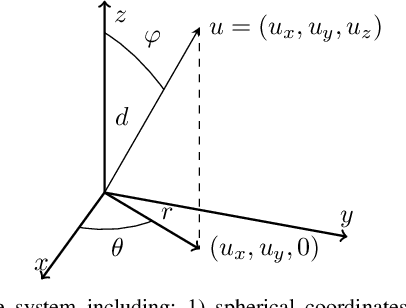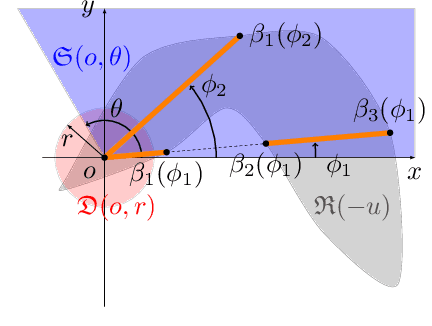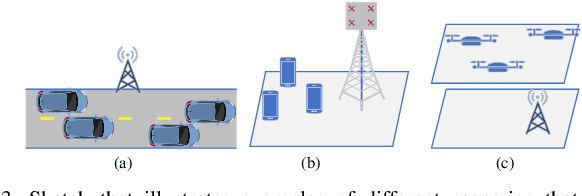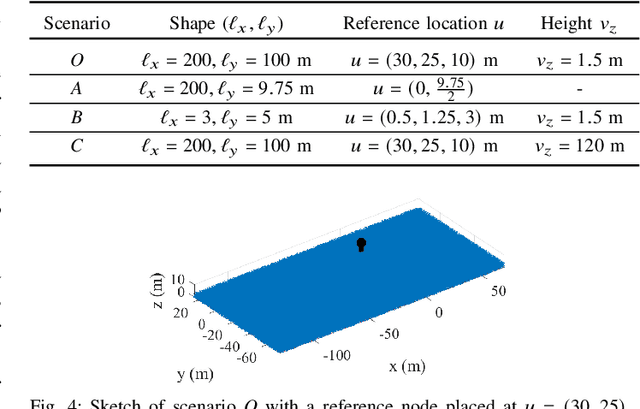Francisco J. Martín-Vega
Optimizing MIMO Efficiency in 5G through Precoding Matrix Techniques
Oct 03, 2024Abstract:Multiple-Input Multiple-Output (MIMO) systems play a crucial role in fifth-generation (5G) mobile communications, primarily achieved through the utilization of precoding matrix techniques. This paper presents precoding techniques employing codebooks in downlink MIMO-5G wireless communications, aiming to enhance network performance to meet the overarching 5G objectives of increased capacity and reduced latency. We conduct a comparative analysis of various precoding techniques outlined by the 5G standard through diverse simulations across different scenarios. These simulations enable us to assess the performance of the different precoding techniques, ultimately revealing the strengths and weaknesses inherent in Type I and Type II codebooks.
Aging-Resistant Wideband Precoding in 5G and Beyond Using 3D Convolutional Neural Networks
Jul 10, 2024



Abstract:To meet the ever-increasing demand for higher data rates, 5G and 6G technologies are shifting transceivers to higher carrier frequencies, to support wider bandwidths and more antenna elements. Nevertheless, this solution poses several key challenges: i) increasing the carrier frequency and bandwidth leads to greater channel frequency selectivity in time and frequency domains, and ii) the greater the number of antennas the greater the the pilot overhead for channel estimation and the more prohibitively complex it becomes to determine the optimal precoding matrix. This paper presents two deep-learning frameworks to solve these issues. Firstly, we propose a 3D convolutional neural network (CNN) that is based on image super-resolution and captures the correlations between the transmitting and receiving antennas and the frequency domains to combat frequency selectivity. Secondly, we devise a deep learning-based framework to combat the time selectivity of the channel that treats channel aging as a distortion that can be mitigated through deep learning-based image restoration techniques. Simulation results show that combining both frameworks leads to a significant improvement in performance compared to existing techniques with little increase in complexity.
Joint Distribution of Distance and Angles in Finite Wireless Networks
Mar 29, 2022



Abstract:Directional beamforming will play a paramount role in 5G and beyond networks in order to combat the higher path losses incurred at millimeter wave bands. Appropriate modeling and analysis of the angles and distances between transmitters and receivers in these networks are thus essential to understand performance and limiting factors. Most existing literature considers either infinite and uniform networks, where nodes are drawn according to a Poisson point process, or finite networks with the reference receiver placed at the origin of a disk. Under either of these assumptions, the distance and azimuth angle between transmitter and receiver are independent, and the angle follows a uniform distribution between $0$ and $2\pi$. Here, we consider a more realistic case of finite networks where the reference node is placed at any arbitrary location. We obtain the joint distribution between the distance and azimuth angle and demonstrate that these random variables do exhibit certain correlation, which depends on the shape of the region and the location of the reference node. To conduct the analysis, we present a general mathematical framework which is specialized to exemplify the case of a rectangular region. We then also derive the statistics for the 3D case where, considering antenna heights, the joint distribution of distance, azimuth and zenith angles is obtained. Finally, we describe some immediate applications of the present work, including the analysis of directional beamforming, the design of analog codebooks and wireless routing algorithms.
 Add to Chrome
Add to Chrome Add to Firefox
Add to Firefox Add to Edge
Add to Edge